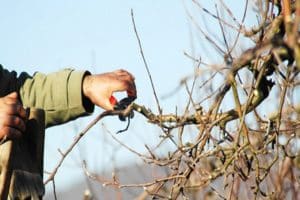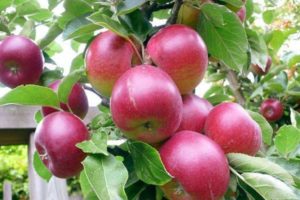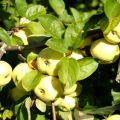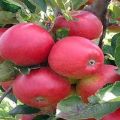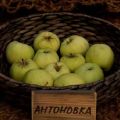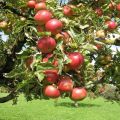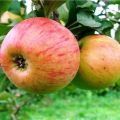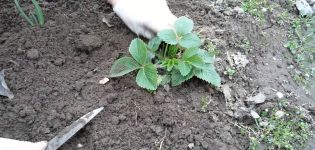Description of the hybrid variety and subspecies of the Anise apple tree, pros and cons and growing rules
Anis apple-tree is considered one of the most widespread in Russia. The hybrid is grown everywhere, and its main advantage is the taste of apples.
Breeding history
It is not known exactly when the Anise variety was bred. But at present, in many areas, a large number of Anise species are found. The hybrid is especially widespread in the Volga region.
External characteristics of the variety
Before buying a seedling, you need to study the characteristics of the tree. First of all, the height of the trunk and the width of the crown.
Height
The height of the tree is average. The apple tree grows up to 4 m. Depending on the variety, the height of Anis can vary.
Crown width
Crohn medium thick. If you do not monitor the growth of the crown, after a few years it will grow enough to interfere with other plants.
Description of the species
The description of the type of apple tree includes technical characteristics. For example, winter hardiness, disease immunity and pollination.
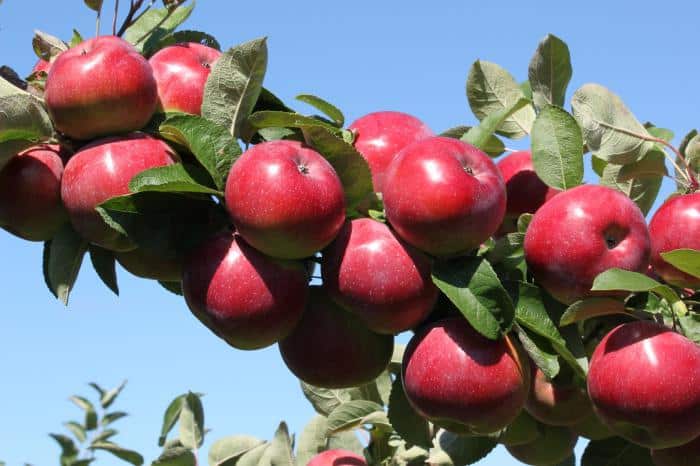
Frost resistance
Winter hardiness is high. There are cases when Anis apple trees survived frosts down to -40 degrees.
Disease immunity
Disease resistance is average. Anise is prone to scab and powdery mildew.
Self-fertility
Anise is self-fertile, so it is not necessary to plant pollinating apple trees nearby.
Pollination
Despite the fact that pollinating plants in the vicinity of Anis are not required, pollination can be increased if the following varieties are planted nearby:
- Borovinka;
- Bellefleur Kitayka;
- July Chernenko.

The distance between the apple trees should not be less than 4 m.
Harvest amount
The yield is high. The older the tree, the more yield it gives. On average, up to 100 kg of fruits are harvested from Anis.
Fruit taste and appearance
Apples weighing up to 100 g. The pulp is juicy, sweet, with a slight sour taste. The peel is thin, red in color with rich scarlet stripes. The anise apple is very aromatic and tasty.
Tree lifespan
Anis's life span is about 40 years. Unlike most varieties of apple trees, Anise's peak yield begins after 20 years of life.
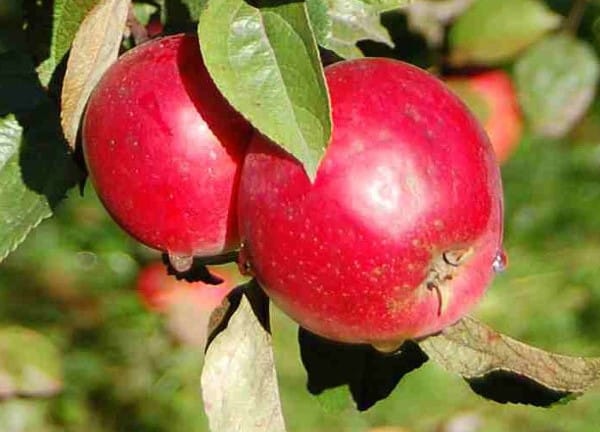
Optimal landing area
The hybrid grows best in the Volga region. Many varieties are grown in Saratov, Penza, Astrakhan and Volgograd. But the hybrid is also suitable for other regions.
Pros and cons of Anis
The advantages of a hybrid include:
- yield;
- tree lifespan;
- fruit taste;
- frost resistance.
Among the disadvantages are the small size of the apples. Otherwise, the hybrid has no significant drawbacks.

How and where to plant an apple tree
Many gardeners neglect this point, and then complain that the seedlings do not take root. Planting a seedling is one of the most crucial moments.
Good time to disembark
Autumn is considered the most favorable period for planting a seedling. The advantage of autumn planting is that the seedling will have time to take root in a new place during the winter. And in the spring, with renewed vigor, it will begin to grow actively.
Soil composition
Anise is undemanding to the composition of the soil. The seedling grows well on light fertile soils. It is better to plant an apple tree on black soil, loamy or sandy loam soil.

Choosing a place on the site
It is best to plant an apple tree seedling in the sunny part of the site. Or as a last resort, in partial shade. In the shade, the tree will not grow well, the harvest will be poor, and the fruits will be sour. The distance between other fruit trees is at least 3 m.
Seating chart
Before planting the seedling in a permanent place, the rhizome is dipped in a liquid clay solution. 2 weeks before planting, a hole is dug 1 m deep and 80 cm wide. The topsoil is mixed with manure and wood ash and covered with the bottom. A stake is driven into the center. After 2 weeks, start planting. A seedling is placed in the center of the pit, buried in soil. Near the trunk, the earth is lightly tamped. The trunk is tied to the stake. At the end of planting, the seedling is watered abundantly with warm water.
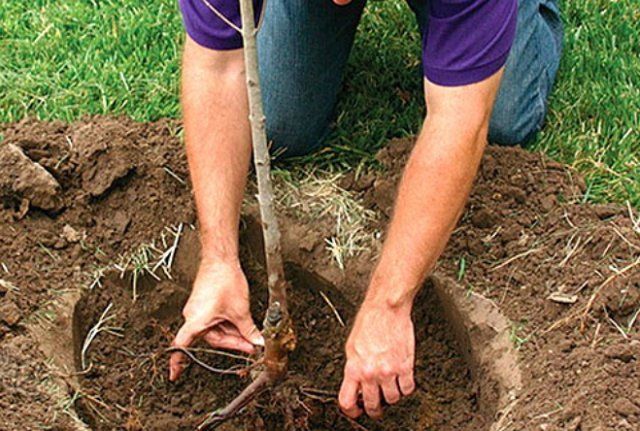
Care for young and adult apple trees
By organizing tree care, you can significantly increase yields. First of all, it is important to pay attention to watering, application of mineral and organic fertilizers and crown formation.
Watering
Water the apple tree not often. Enough four times per season.
- The first time the plant is watered during the period of bud formation.
- The second time is during flowering.
- The third watering is carried out during the apple pouring period.
- The last time the soil is moistened in the fall, before preparing the plant for winter.
One adult tree takes from 2 to 5 buckets of water. You need to water only with warm water. If you water an apple tree with cold water, it begins to suffer from fungal diseases.
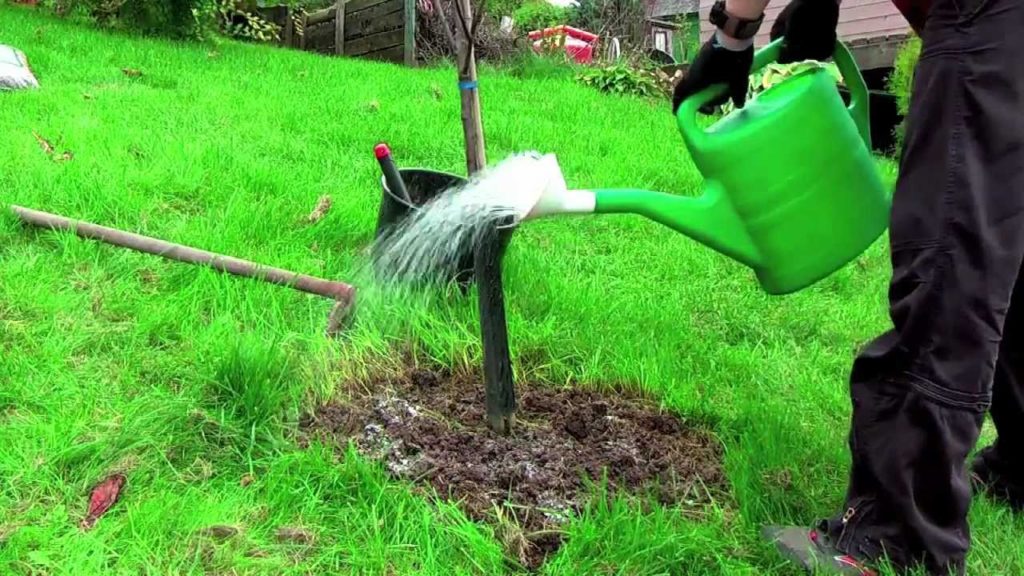
Foliar and root fertilization
In the first half of the season, nitrogen, urea, ammonium sulfate, and ammonium nitrate are introduced into the soil under the root. From organic matter, the apple tree is fed with manure, bird droppings and peat. All these dressings are applied at the root. In the second half of the season, the apple tree needs phosphorus and potassium.
In addition, the same organic fertilizers are used.
The first feeding is carried out after the blooming of the leaves. The second time, fertilizers are applied during the period of bud formation. Then when the apple tree starts to bloom. It is also important to feed the plants during the period of fruit filling. From foliar dressing, superphosphate and mineral fertilizers are used. Top dressing is diluted in water, and then the tree is sprayed. Foliar dressing is carried out several times at intervals of 2 weeks.

Crown formation
Spring pruning aims to rejuvenate the tree. Cut off young growth, part of the upper branches. Only 3-5 skeletal branches are left. Places of cuts are treated with potassium permanganate or brilliant green. In the fall, dry and damaged branches are cut off.
Prevention and control of pests and diseases
In order to prevent insects and diseases, plants are sprayed with Bordeaux liquid, iron vitriol or biological products.
Of the folk methods, spraying with soapy water is effective.
Shelter and preparation for winter
It is not necessary to cover the apple tree for the winter. But it is worth mulching the soil around the trunk. Peat, straw or sawdust are used for mulching. The thickness of the mulch is at least 15 cm. You also need to cover the lower part of the trunk with durable material. Very often in winter, mice gnaw the bark of an apple tree.

Varieties and description of subspecies
There are several varieties of Anisovka. Each variety has a number of characteristics.
Striped
It is characterized by a spreading crown. The fruits are round in shape. The yield is high. The apples are medium in size, weighing from 70 to 95 g. Fruits lend themselves well to transportation and lie for a long time after harvest.
Sverdlovsk
Refers to late varieties. Fruiting occurs 2-3 years after planting the seedling. The peel of the fruit is yellow with a red blush. The average weight of apples is 100 g. High winter hardiness and productivity.
Purple
Differs in large fruits of a rich purple hue.
Pink
In terms of characteristics, it is not much different from Anis ordinary.
Scarlet
The tree is tall, the crown is spreading. Apples of a green shade with a scarlet blush. The taste of the pulp is sweet and sour with a rich apple aroma. The harvest ripens in the second half of August.
